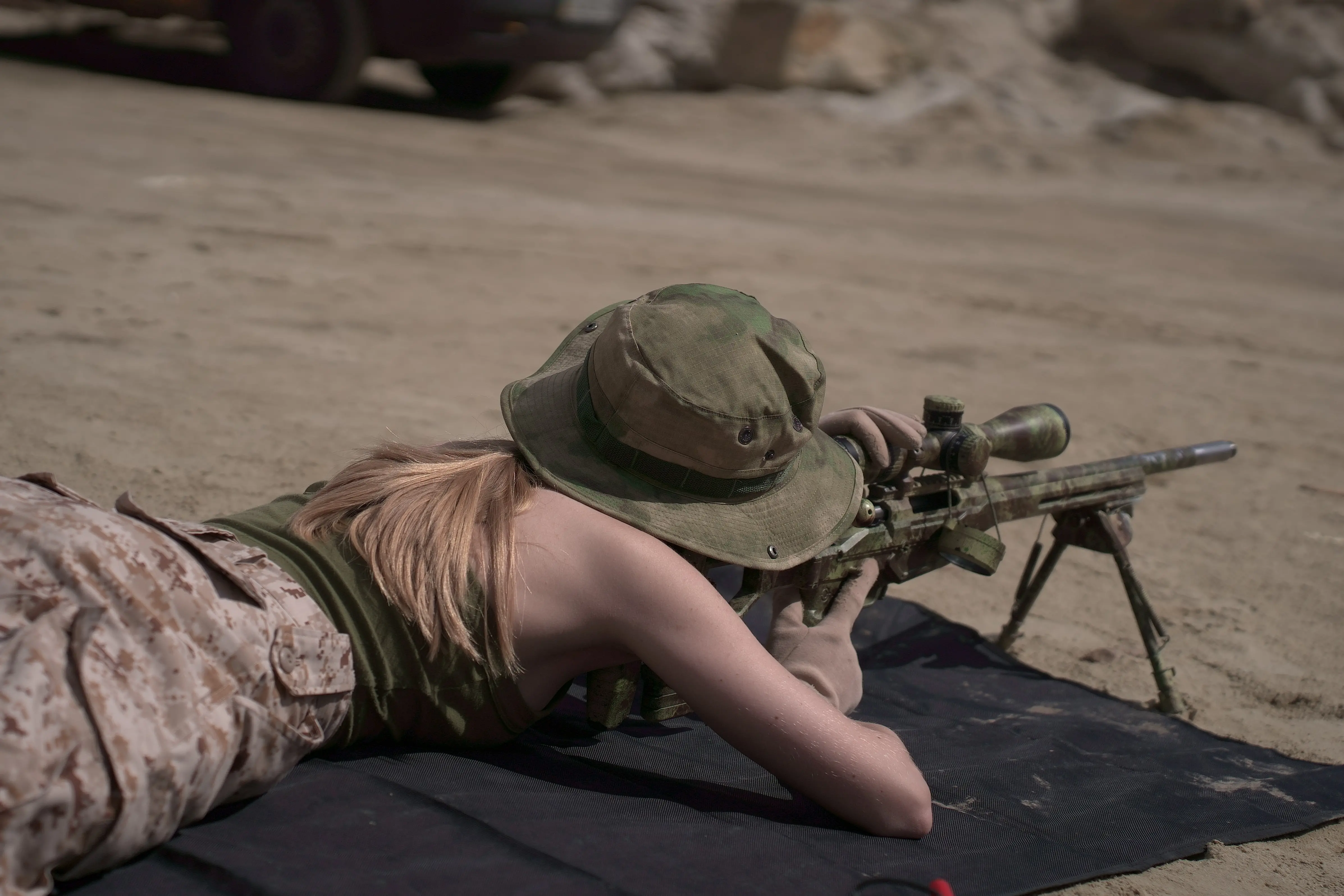
“I'll put a bag over your head, lead you into the basement, and leave you there. It's flooded and full of obstacles [...] and rats,” says a large Ukrainian trainer who goes by the callsign “Charon.” “It'll also be pitch-black. Your objective is to make it out. Be ready for me to throw simulated grenades at you."
VICE World News is at “Everest,” a compound at an undisclosed location on the outskirts of Lviv in the west of the country, where Ukrainian Territorial Defence recruits are preparing to be bound and blinded to see if they are ready for war.
Charon, who was given his moniker after the mythical Greek ferryman of the dead, leads recruits individually into the pitch-black basement of a derelict building to see whether they are psychologically resilient enough to be sent to war. Aging remnants of the Soviet-era factory – wires, splintered wood and plastic – litter the uneven ground, while old desks and sharp grates obstruct the maze of corridors and rooms.

As a nonprofit journalism organization, we depend on your support to fund coverage of global conflicts. Help us continue funding the hard costs of in-depth coverage of the Ukraine invasion—including travel, hostile environment safety training, and the increased security expenses that arise from reporting in war zones.
Charon – who, along with all the recruits and trainers at Everest, VICE World News is not naming in full for security reasons – pushes his cadets, blinded by black bags, through the narrow and obstacle-filled hallway of the basement. “Believe me, the Russians are not gonna be that polite to you,” he jokes. I have also been bound at the wrists with zip ties and blindfolded with a bag over my head to try out the so-called “stress test” that hundreds of Ukrainian volunteers are being put through. After being led through dark passages, I am left on the ground with my hands bound and legs tied. A knife is thrown nearby, the lights are shut off, and the bag comes off my head. The mission: cut myself free and find a way out.
We visited a compound in an undisclosed location in Western Ukraine where trainers with codenames like “Charon” and “Prophet” are trying to prepare young Ukrainians for the horror of the frontline. https://t.co/wV0Hs2xRCz pic.twitter.com/9tHgx8IzRf
— VICE World News (@VICEWorldNews) June 7, 2022
But it doesn’t end there. Without warning, instructors begin tossing practice grenades into the hallway. About 1 second after you hear the pinging sound of a practice grenade bouncing off of the floor, there’s a loud bang and a flash of light. As an instructor throws one into the pitch-black hallway of the basement, the right move is to crouch, cover your ears, and look away. If you don’t, your eardrums start to ring painfully.

The aim of all of this is to simulate the stresses of war, testing the mental capacity of the recruits. The training is based on US specialised military training prep, says Charon, who trains dozens of cadets a month. This psychological test is unique to Everest, and was implemented in response to a lack of mental resilience prep in the standard training regimen.
It’s been over three months since Russian forces began their invasion of Ukraine, and as each day passes, more troops are needed to defend their homeland. Volodymyr Zelenskyy, the Ukrainian president, says up to 100 of his soldiers are being killed every day as fighting intensifies around Donbas in eastern Ukraine, with hundreds more wounded. But the many people who have been psychologically damaged are not counted in this number. As the military is being forced to draft untested fighters to the frontline, a generation of Ukrainians is being scarred by the trauma of battle. With limited time and resources, military boot-camps and training centres are rushing to train civilians on how to handle an AK-47, but few explain how to handle the horrors of war. The new volunteer-run training centre that VICE World News trained at, which is sending troops to both the Ukrainian Army and Territorial Defence Forces, has introduced a stress-test as part of its training to filter out those who are unfit for battle.
And, as VICE World News discovered, blindfolded and unable to find a knife thrown on the floor among shards of glass, the test isn’t easy. “Some of our cadets start singing, some shout, others get violent and start throwing the obstacles out of the way,” Charon explains. It can take hours for some to make it out, but instructors aren’t just interested in whether they succeed. Instead, they’re watching to see whether recruits can keep their composure during the test. Not all are able to.
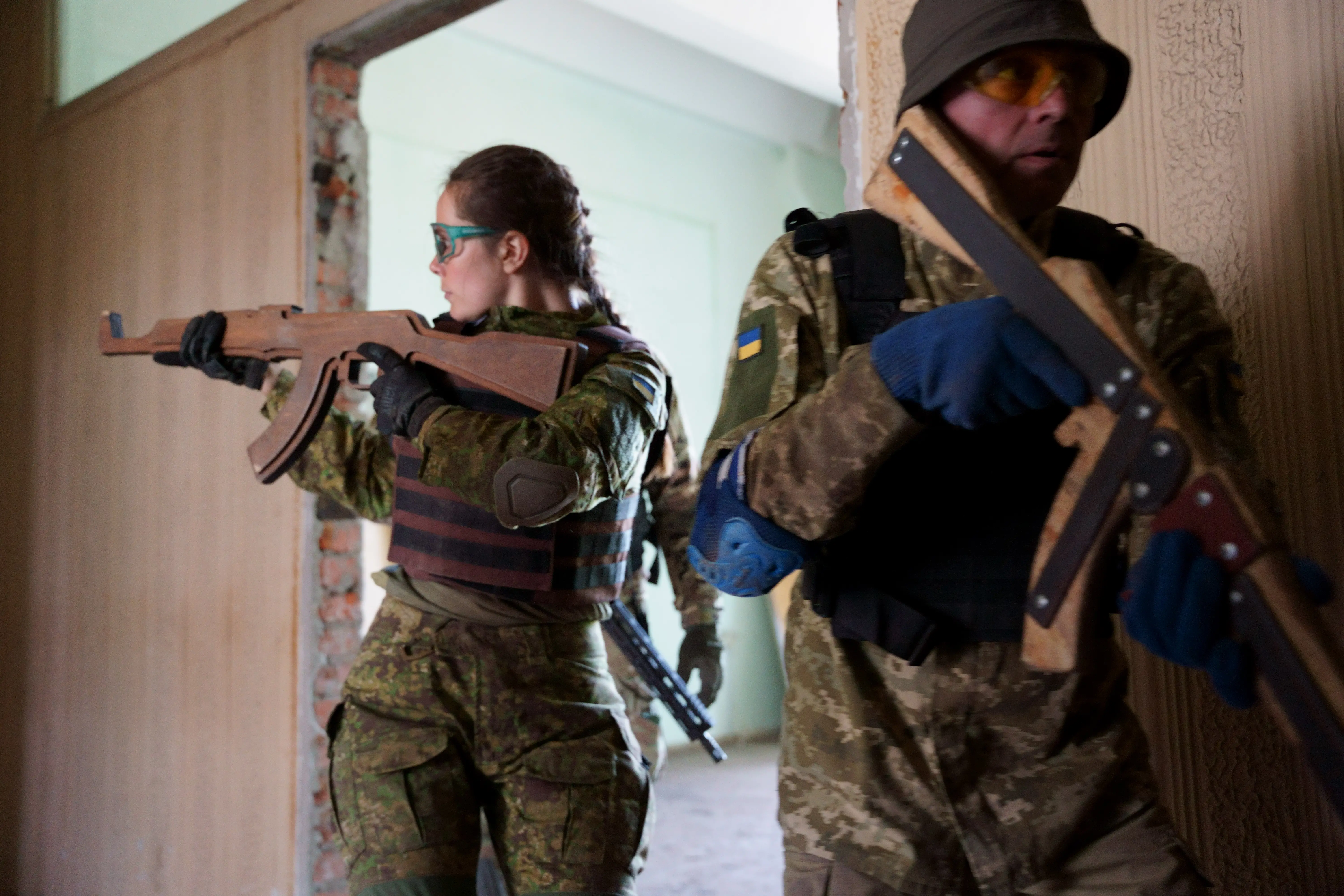
“We had an example of a person who had a panic attack in there, and we had to stop it,” Charon says.
“[The failure of the test] shows us that in the middle of the battle, when the mines and the missiles are going to be firing and exploding, that the person is going to get too much fear, and they’re just gonna get stressed out and panic,” Charon says. And in battle, panic leads to failure.
Newbie soldiers at Everest are put through an 18-day intensive training programme before being sent to fight. Advanced soldiers are sent to the Ukrainian Army, while others are sent to the Territorial Defence Force. But during the three weeks of training, instructors keep an eye out for those showing potential for greatness – they’re placed into an “elite” group and stay behind at Everest to be trained in specialised tactics and skills.
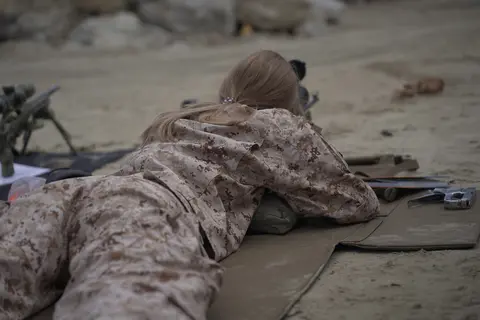
Everest is sanctioned by the Ukrainian Ministry of Defence, but it’s run by a purely volunteer staff. Nazar, who ran a construction firm before the war, developed the operation in collaboration with two friends. Soon enough, they had former troops with significant combat experience onboard, keen to pass their wisdom on to new soldiers. One of Everest’s senior instructors, known as “Prophet”, injured his spine in combat, and can’t fight on the frontline anymore.
The necessity of psychological preparation is clear when examining what actually happens to young and inexperienced troops in combat. VICE World News spoke with Mykyta, a soldier currently on the frontline in Donetsk. He told us that six of the 30 men in his squad just couldn’t handle the stress.
He says they were “young guys, 22 to 25 years old, who just know about war by watching movies.”
Mykyta, who VICE World News is not naming in full for security reasons, said they were incapable of fighting. “In the time when everything was fine, they [were] fine. When someone was dying nearby, they [were] afraid they would die too, so they [were] just stuck,” Mykyta explained, from his battle position over a shaky phone line. “They [did] nothing when the battle [was] going on.”
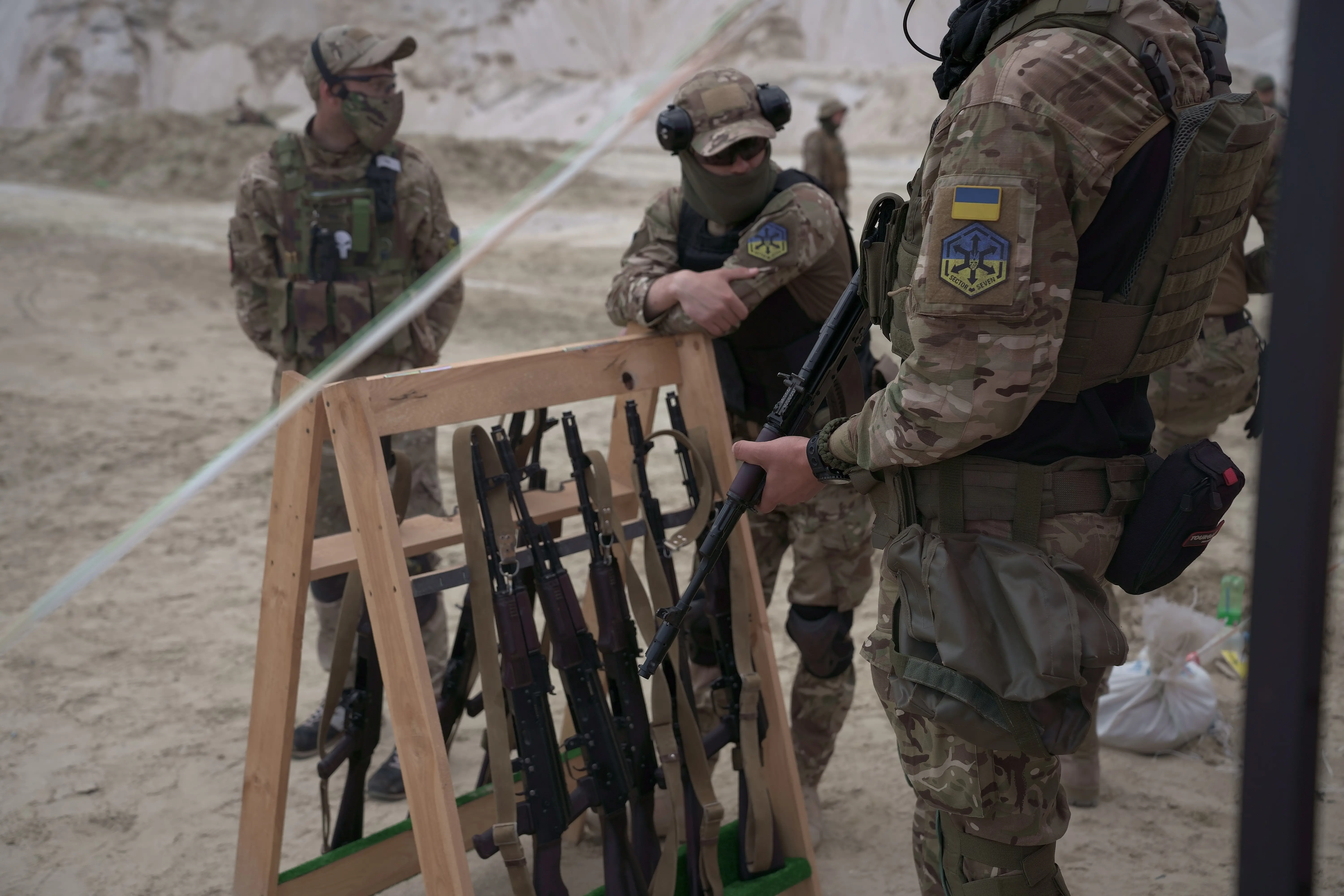
Mykyta’s commander, an ex-Soviet officer, sent the six soldiers to the rear lines, away from the trauma of the front. “On the frontline, these guys are a little bit useless,” Mykyta said. “We had to spend some of our attention not on the enemy, but on these guys. So it’s better for all of us that the squad is without.”
At Everest, cadets go through hundreds of drills, from shooting practice to mine-clearance. Cadets even get “snake-training,” where they are taught how to deal with Ukraine’s venomous snakes, which are supposedly common in the forests where much of the fighting is happening, and to care for their habitats.
Specialised courses, such as sniper training and air intelligence, are offered only to the elite few who the instructors deem worthy.
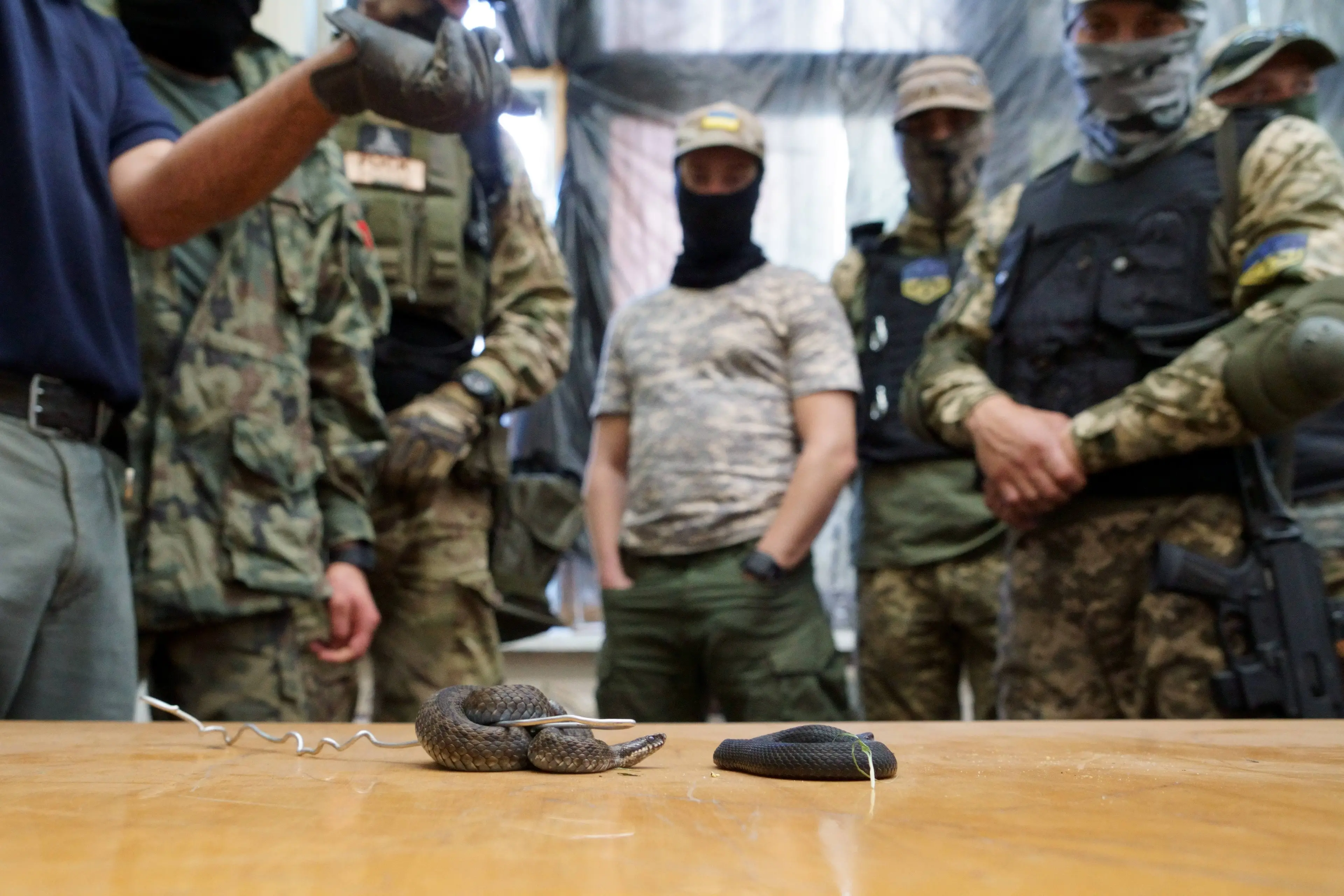
A young recruit, codenamed “Miley”, is one of these elite trainees. She was chosen to be a sniper.
“I want to know how to kill,” she says. Before joining, Miley contributed to the war effort volunteering by making camouflage netting and molotov cocktails with a friend who, she says, describes her as aggressive. “I’m aggressive because they [the Russians] made me aggressive,” she says.
She’s 23, with no combat experience. When she’s not training, Miley works in a beauty call-centre part time. Her dream is to make music – like Miley Cyrus, her favourite singer. But that comes after the war.
“I feel like after this work, I need to go to the psychologist. So yeah, so I'm worried about that,” Miley explains, “but still, I have to do it, because I’ll regret it all my life if I do not.”
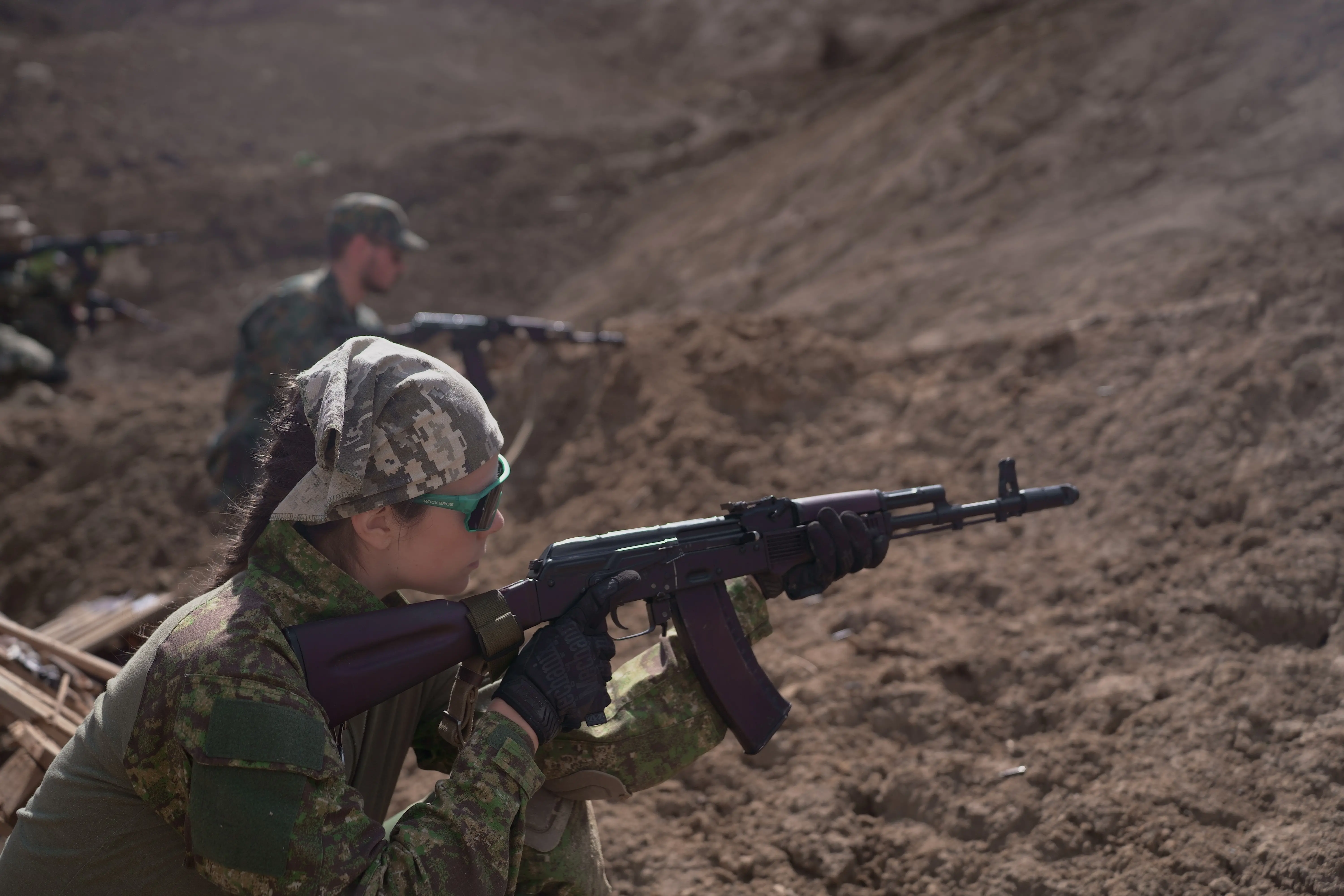
And while Everest places an unusually strong emphasis on the mental preparation required to fight before deployment, there are also serious consequences to ignoring soldier’s psychological needs after they come home. Andriy Sadoyvi, Lviv’s mayor, understands the shortfalls of how Ukraine faced combat trauma in soldiers who fought in Donbas in 2014.
Physical wounds were treated, but psychological wounds were not. “We are aware of some examples of [veterans] dating back to 2015, when wounded people received prosthesis,” Sadoyvi told VICE World News. “But they were not really offered any psychological support, and so quite a few of them committed suicide.”
Sadovyi is planning a rehabilitation centre for victims of Russia’s war on Ukraine.
“Vivaldi” is a more recent case of battlefield trauma. He was critically injured in March when a mortar landed at his feet while he was fighting in Donetsk. VICE World News spoke with him at a military hospital in Lviv, where he is being treated for injuries suffered in the blast.

“I was afraid that an infantry attack would follow the [mortar] attack,” he said. “I urged my unit to leave me with grenades and fall back.”
His squad refused to leave him. They applied four tourniquets to him – one on each limb – and carried him to safety.
For a month after his injury, he was unable to sleep.
At night, he was stuck in ‘military mode,' hypervigilant to threat. Vivaldi’s doctors continue to prescribe him medication, which he can’t sleep without.
Vivaldi refused the optional psychological consultations offered by the military hospitals, as did two other injured soldiers who spoke with VICE World News about their trauma.
At this time, the typical Ukrainian army training regimen does not emphasise mental health. Beyond an outdated written character assessment, there is little in the way of preparation for the horrors of the battlefield – or the ghosts that inevitably haunt those after the fight.
“I go to the big mountains a lot and I know how difficult it is to prepare and climb to the top,” Nazar says. “I know how it feels when you climb to the top and come back to your family alive.”











